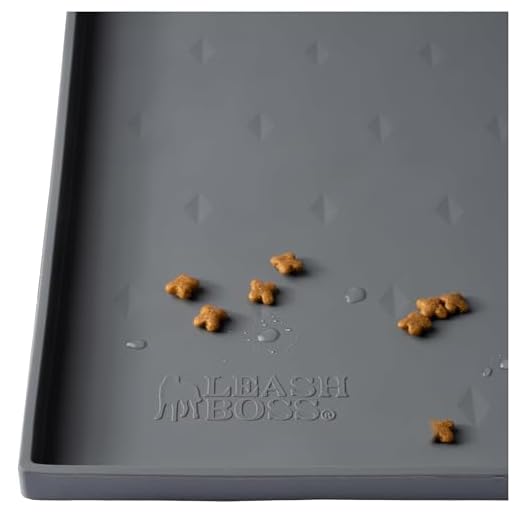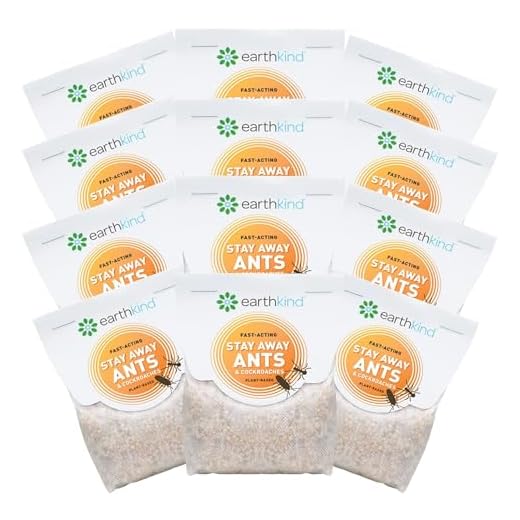



Placing my nourishment in airtight containers is a must. This simple action prevents those little intruders from sniffing out my treats. The containers not only preserve freshness but also serve as a barricade against unwanted guests.
Using a feeding mat with raised edges can also be a game-changer. It keeps the area tidy and helps contain any stray bits that might attract attention from the outside. I enjoy my dining space without any unwelcome companions invading my territory.
Another trick I’ve picked up is creating a barrier with natural repellents. Sprinkling cinnamon or using peppermint oil around my designated eating spot sends a clear message to any curious creatures. They simply do not like the scent, and that’s perfectly fine by me.
Finally, regular clean-ups are essential. After every meal, ensuring that no crumbs are left behind keeps my area clean and less appealing. A little effort goes a long way in maintaining my dining experience as I prefer it–critter-free!
Identify common entry points
Check for gaps around windows and doors. Seal any openings with caulk or weather stripping. Look at the foundation for cracks or holes; these can be filled with cement or foam insulation. Pay attention to plumbing and electrical lines entering the home; ensure they are tightly sealed. Inspect vents and chimneys for openings; use screens to block access. Regularly examine the baseboards and corners of rooms for tiny trails. If you notice any, trace them back to their origin.
Outdoor areas deserve attention as well. Plants close to the house can provide a bridge. Keep branches trimmed away from walls to minimize access. Check garden hoses and outdoor furniture for hiding spots. Ensure that garbage bins are tightly closed and cleaned regularly, as they attract all sorts of critters. By identifying these areas, it’s easier to reduce the chances of unwelcome visitors.
Use food containers that deter little intruders
Choose airtight containers made of heavy-duty plastic or glass. These prevent access while keeping everything fresh. I like the ones with a secure locking mechanism that makes it harder for tiny critters to sneak in.
Consider containers with a wide base. Stability reduces the chance of tipping over, which can spill contents and attract unwanted visitors. Look for options with a smooth interior surface; this makes cleanup simpler, ensuring no crumbs are left behind.
Elevated designs
Some storage solutions come with elevated bases or stands. This design not only saves space but also makes it difficult for little pests to reach the food. Keeping my meals off the ground helps maintain a clean area.
Decorative and functional
Find stylish containers that match your home decor. This way, your feeding area looks nice while serving its purpose. Aesthetic choices encourage a tidy environment, making it less appealing for tiny visitors to explore.
Implement natural repellents around feeding areas
To deter uninvited visitors, I suggest using natural substances like vinegar, citrus peels, or essential oils. Spraying a mixture of water and vinegar around the feeding spot creates an unpleasant environment for those little intruders. Similarly, placing citrus peels nearby can help, as their scent is often off-putting to many insects.
Essential oils for added protection
Using essential oils such as peppermint or tea tree can enhance the barrier. Mix a few drops with water in a spray bottle and lightly mist the area where I dine. The strong aroma not only keeps the critters away but also adds a fresh scent to my feeding zone. Make sure to reapply these solutions regularly, especially after rain or cleaning.
Creating physical barriers
Another tip is to set up a perimeter using diatomaceous earth. This natural powder can be sprinkled around the feeding area to create an inhospitable environment for unwanted guests. It won’t harm me or my human but will deter the small pests effectively.
For those who enjoy hiking, check out this backpack that’s perfect for outdoor adventures, keeping snacks safe from nature’s critters.
Establish a Regular Cleaning Routine for Feeding Spots
To maintain a tidy area for my meals, I follow a strict schedule for cleaning the feeding zones. Daily inspections ensure that no leftover crumbs or spills accumulate.
Daily Cleaning Tasks
- Wipe the feeding mat and surrounding floor with a damp cloth each day.
- Remove any uneaten portions of kibble or wet food after each meal.
- Check for moisture around the bowl, as damp spots attract unwanted visitors.
Weekly Deep Cleaning
- Soak the food and water dishes in hot, soapy water to eliminate residue and odors.
- Replace the feeding mat weekly to keep the area fresh.
- Vacuum the surrounding area to capture any stray bits that may have fallen.
By sticking to this routine, I ensure a clean space that keeps my meals enjoyable and free from intrusions.
Monitor and Adjust Feeding Practices to Minimize Attraction
Limit portions to what I can consume in one sitting. Leaving excess around invites unwanted visitors. Set specific mealtimes, ensuring prompt removal of uneaten portions. After my meal, clean the area thoroughly to eliminate any scent trail that might attract intruders.
Consider the type of nourishment offered. Certain options may have ingredients that are more appealing to unwanted guests. Explore alternatives like the best food for cats with dandruff, as they might be less enticing to insects while still providing the nutrients I need.
Monitor my eating habits. If I tend to nibble throughout the day, adjust schedules to align with my natural eating patterns. Feeding me in smaller, more frequent amounts can help manage the attractiveness of the location.
Stay vigilant about external influences. If I’m outdoors, ensure the feeding area is clear of debris and other potential attractants. By being proactive, the feeding space can remain a safe zone for my meals.
FAQ:
What are some simple methods to prevent ants from getting into my cat’s food?
There are several straightforward methods to keep ants away from cat food. First, place the cat’s food bowl in a shallow dish filled with water. This creates a barrier that ants cannot cross. Another option is to use ant bait stations around the area, which can attract and eliminate ants before they reach the food. Additionally, you can keep the feeding area clean by regularly washing the bowl and surrounding surfaces to remove food residue.
How can I make my cat’s food less appealing to ants?
To make cat food less attractive to ants, consider storing the food in airtight containers. This helps to eliminate odors that can attract ants. Additionally, you can try feeding your cat smaller portions more frequently, which can reduce the time that food is left out and available for ants. Also, using certain spices like cinnamon around the food area may deter ants due to their strong scent.
Are there any natural repellents I can use to keep ants away from cat food?
Yes, there are several natural repellents that can help keep ants away. For instance, you can sprinkle diatomaceous earth around the feeding area, which is safe for pets but harmful to insects. Vinegar is another option; a mixture of equal parts vinegar and water can be sprayed around the area to deter ants. Essential oils like peppermint or tea tree oil can also be effective; just make sure to use them sparingly and keep them out of reach of your cat.
What should I do if I find ants in my cat food?
If you discover ants in your cat food, it’s best to discard the contaminated food immediately to prevent your cat from eating it. Clean the feeding area thoroughly with soap and water to remove any ant trails. After cleaning, assess how ants are entering the space and implement preventive measures such as those mentioned above, like using barriers or natural repellents. Monitor the area closely to ensure the problem doesn’t return.
Is it safe to use pesticides around my cat’s food to eliminate ants?
Using pesticides around your cat’s food is generally not recommended, as many commercial insecticides can be harmful to pets. If you choose to use pesticides, ensure they are specifically labeled as safe for use around animals and follow the instructions carefully. It’s often better to rely on natural methods or consult a pest control professional who understands pet safety to find a suitable solution.








